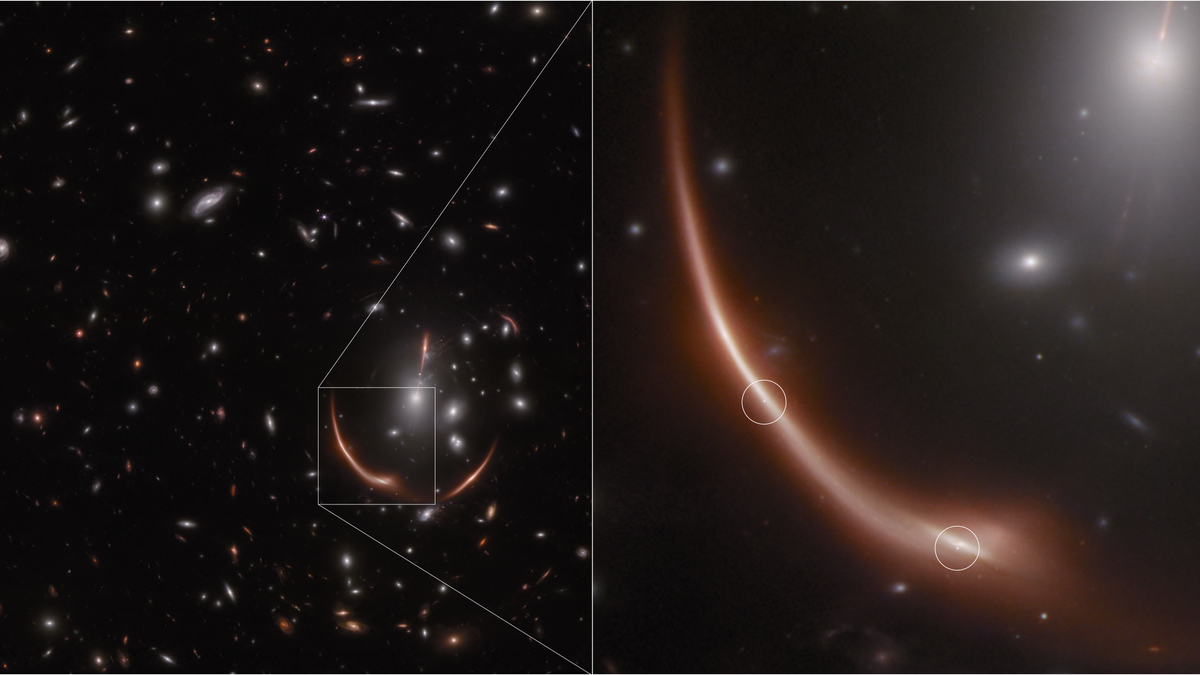
Last month, astronomers focused the Webb Space Telescope on the galaxy MRG-M0138 and found something surprising: a supernova in the ancient universe, magnified for your viewing pleasure by the gravitational lensed galaxy.
When stars die, they release a huge amount of energy, which astronomers can observe as a bright light source called a supernova. The supernova imaged by Webb is the second spotted in the lensed region.
Advertisement
Named Encore, the supernova was “discovered serendipitously,” according to Justin Pierel and Andrew Newman, co-principal investigators of the Webb Director’s Discretionary Time program 6549, who discussed the discovery in a Space Telescope Science Institute release. You can read all about the program here.
Advertisement
The first lensed supernova seen in MRG-M0138 was spotted in a 2016 image taken by Hubble. It was named Requiem, because it vanished and reappeared, before disappearing in 2019. As previously reported by Gizmodo, astronomers have calculated that the Requiem supernova will reappear in 2037, give or take a couple years. Now, according to the STScI release, it looks like the updated timeline is 2035.
Advertisement
Gravitational lenses are regions of space where the gravitational force of an object bends more distant light, magnifying it to observers (like the Webb Space Telescope) on the object’s other side. Astronomers can exploit these gravitational lenses to observe very faint and distant (which is to say, ancient) light; ergo, the lenses reveal some of the farthest light sources we can see.
Last year, the Hubble Space Telescope imaged Earendel, the oldest known star, in a thin gravitationally lensed crescent of stars linked together in space like the knots on a daisy chain. Webb also makes use of these lenses; in February, the telescope observed lensed light from Pandora’s Cluster (Abell 2744) and discovered hundreds of never-before-seen galaxies. Though other telescopes had observed the cluster before, Webb’s ability to image in infrared and near-infrared light allows it to see farther and detect fainter objects than other observatories.
Advertisement
The lenses often form arcs like those in MRG-M0138. Earlier this year, a different team of astrophysicists found evidence of axionic dark matter in Einstein rings—unique cases where the lensed light forms a complete ring in space, like a massive, forbidden cosmic halo.
Both Requiem and Encore are Type 1a supernovae, or “standard candles” with known absolute magnitudes, allowing astronomers to know their distance. Because their distance can be calculated, standard candles are crucial data points for scientists calculating the size of the universe and the rate of its expansion, which yields different rates depending on how it’s calculated. This discrepancy, known as the Hubble Tension, continues to vex astrophysicists.
Advertisement
According to Pierel and Newman, Encore and Requiem are the most distant pair of standard-candles ever discovered. When Requiem reappears in a little over a decade, scientists will have an opportunity to recalculate the Hubble Constant with new precision.
More: The Best Space Images of 2023
Services Marketplace – Listings, Bookings & Reviews